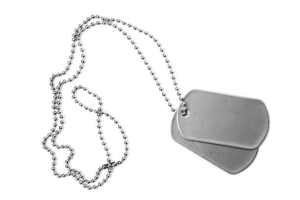Press Release | Jan. 31, 2025
Pilot Accounted For From World War II (De Jarnette, J.)
WASHINGTON –
The Defense POW/MIA Accounting Agency (DPAA) announced today that U.S. Army Air Force 1st Lt. Joe A. De Jarnette, 24, of Fort Thomas, Kentucky, killed during World War II, was accounted for June 20, 2024.
De Jarnette’s family recently received their full briefing on his identification, therefore, additional details on his identification can be shared.
In spring 1944, De Jarnette was assigned to the 732nd Bombardment Squadron, 453rd Bombardment Group, 2nd Combat Bomb Wing, 2nd Air Division, 8th Air Force, in the European Theater. On April 8, De Jarnette, the pilot onboard a B-24H “Liberator,” Little Joe, was killed in action when his plane was shot down by enemy fighter aircraft fire while on a bombing mission to Brunswick, Germany. Airmen aboard other aircraft flying in formation with Little Joe did not report seeing any crewmembers exiting the aircraft before it crashed in the vicinity of Salzwedel. The crash site could not be located by Allied forces during the war, and the remains of all ten crewmembers, including De Jarnette, were unaccounted for following the war.
Beginning in 1946, the American Graves Registration Command (AGRC), the organization that searched for and recovered fallen American personnel in the European Theater, began investigating the numerous bomber losses in the Salzwedel and Wistedt areas of Germany. German forces had maintained accurate documentation (Kampfflugzeug Unterlagen, or KU) of American aircraft shoot-downs, with several reports indicating B-24s crashing in the area. However, AGRC was unable to associate any KU reports with Little Joe and investigators were unable to locate any crash or burial sites associated with the loss.
In 2015, an independent research group, Missing Allied Air Crew Research Team (MAACRT), contacted DPAA historians with new information related to a possible crash site near Wistedt, Germany. Interviews with elderly local residents indicated there were two crash sites, but only one was recovered by American forces following the war. Investigators located the second crash site and were able to recover various pieces of wreckage. Possible osseous remains were also located and transferred to the DPAA laboratory for analysis and identification. At the time, no matches could be made with any Unknowns and further investigations were scheduled.
Between 2021 and 2023, DPAA investigators returned to the crash site and continued investigation, and then excavations and recoveries. By the end of November 2023, all evidence, including possible osseous remains and possible life support equipment, had been recovered and returned to the DPAA laboratory.
To identify De Jarnette’s remains, scientists from DPAA used anthropological and dental analysis. Additionally, scientists from the Armed Forces Medical Examiner System used mitochondrial DNA analysis.
De Jarnette’s name is recorded on the Walls of the Missing at Netherlands American Cemetery, Margraten, Netherlands, along with others still missing from WWII. A rosette will be placed next to his name to indicate he has been accounted for.
De Jarnette will be buried in Erlanger, Kentucky, on a date to be determined.
For family and funeral information, contact the Army Casualty Office at (800) 892-2490.
